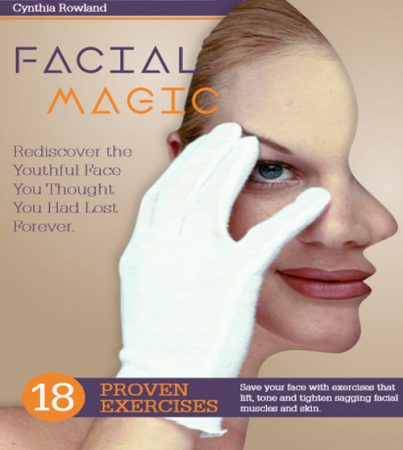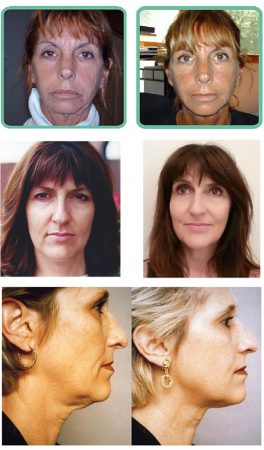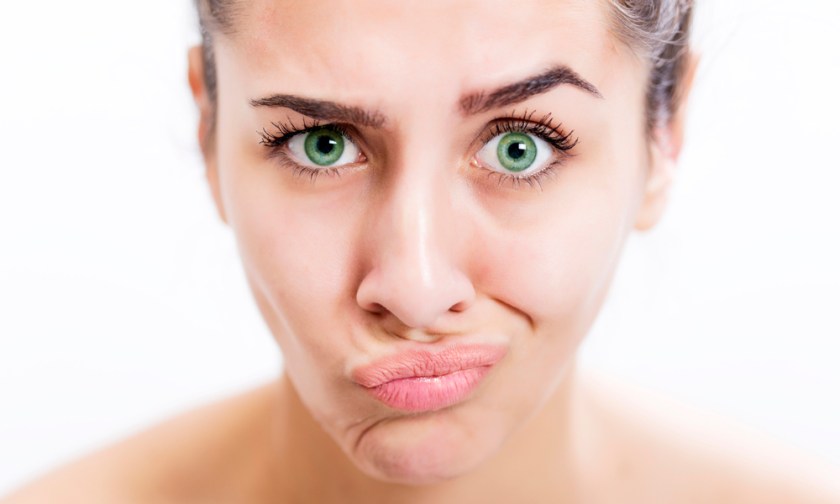We variously hit the gym, do weights, yoga or Pilates, power walk or run, cycle or swim, play sports – whatever it takes to be fit, healthy, burn fat, keep our muscles and stay in youthful shape.
To tone the body, we’re told to build stronger muscles. The act of pulsing the muscles through repetition of movement, whether through cardio, strength training or barre classes, is the only way to achieve results.
Yet, to tone and lift the skin, we turn to topical treatments. But the face and neck have muscles, too, most of them working in an upward direction. As we age, muscles lose tone and bulk unless “worked” and thereby contribute to a drooping appearance.
This is exacerbated by the weakening of connective supporting tissue (elastin and collagen fibres of the skin) so that skin also loses tone, density and elasticity. All of which equals an ageing appearance.
Age is not the only factor. The process can speed up with too much sunlight, hormonal alterations such as menopause, smoking, body weight changes, gravity and tissue oxidation.
This process usually begins to be noticeable from age 35, and gains momentum in the 40s, 50s and beyond. Hence the boom industry that is aesthetic surgical and non-surgical procedures.
“Most people realise in their 30s and 40s that their faces appear elongated, soft and not quite as youthful as when they were younger,” says Cynthia Rowland, founder of the Facial Magic Facial Exercise System empire.
She is widely recognised as an expert in all-natural facial fitness and has appeared on US TV’s The View, The Today Show, Rachael Ray, The Doctors and other popular shows.
“At the start of the ageing process, you’ll feel the loosening in your cheeks with facial lines becoming very noticeable,” she says.

“Wrinkles from sleeping take a long time to disappear and when you look in the mirror, you notice your skin has no glow and resilience.
“By the time a person has reached age 55, the muscles in the face will have lengthened about half and inch from disuse.”
“Learning to isolate then anchor a facial muscle with our `age erasers’ – our thumbs and finger – is the secret.”
Cynthia, 68, and has been doing the exercises for more than 25 years.
“The reason it all started was because my left eyelid sat on my eyelash,” she recalls. “It was so dismal, because it made me look old and tired. I wasn’t old and tired, but that very feature made such a big difference.
“I just couldn’t bring myself to thinking about spending thousands of dollars on myself, when I had two teenage boys who needed clothes, shoes for sports, books for school.
“So I started to speak to women about what they did to stop their eyelids from sagging. One of my girlfriends had an eyelift and I was shocked – her eyes no longer looked even and after six weeks she was still heavily bruised. I just thought to myself, `There’s no way I can do that’.
“Then I learned of a French woman, Marcelle Chapette, who was teaching a facial exercise program in Denver, Colorado, that worked like a facelift.

“Naturally I was very sceptical but decided to fly to Colorado to meet her. There were all these beautiful women in her waiting room – they’d been prepped that I didn’t believe a word of it!
“When I recognised what I was seeing I knew right then that this was what I wanted to do with my life.”
Cynthia’s program consists of nine progressive weeks where two new 35-second exercises are added each week, totalling 18 movements at the end of the program.
Thumbs and fingers are the only tools needed to work different muscle – the forehead, upper cheeks, the neck and chin.
Cynthia herself teaches each movement on a 1-hour DVD with complete instructions.
She claims that the key is to contract the facial muscles. When she first started her program, many doctors didn’t believe the results could be from manual movements.
“They were accustomed to just seeing these twists and puckers [that actually cause wrinkles] – funny faces that people would make and call it facial exercise,” she says.
“I teach isometric techniques that anchor the muscles, to create a contraction to lift the face. When you do that, the muscle lifts up and pulls back into the hairline, taking the skin with it.
“This is because facial muscles are attached to skin, not bone. Because the muscles are attached directly to the skin, that oxygenated blood is forced into the tissue of the skin and all of a sudden it looks plump and juicy again. Your skin is thicker and more vibrant looking.”

The program uses isometric contraction with resistance to lift, tone and tighten sagging facial muscles.
“We divide the face into 15 regions and offer 18 simple exercises to correct the facial sagging,” she says.
“Facial muscles weaken and this makes our faces look tired and drawn. Some people look angry. Eyebrows drop with age because the forehead muscle lengthens. This action results in hooded, lined and crepey eyelids.
“The cheek muscles lengthen and nasal labial folds develop between our nose and our mouth.
“The dreaded `wattle’ can appear along with jowls and pouches as our lower face loses its youthful contours.
“Each exercise requires 35 seconds. They are broken into segments of 5 seconds, 10 seconds, 10 seconds and 10 seconds.
“The action of isometric contraction with resistance in our faces has many benefits. The first benefit is increased oxygenated blood, which helps the skin look revitalised.
“Forcing oxygenated blood to the facial tissue is a great anti-ageing asset because the exercise targets and strengthens the underlying muscles of your face and skin looks younger, healthier and fresher.
“Over time, usually in 12-15 weeks, people can look 5, 10 even 15 years younger.
“There are further health benefits as confidence builds, sinus problems decrease and even headaches lessen.”
Here Cynthia shares some key exercises from her new book:
The Upper Eye exercise, to lift the brows and begin to tighten lax forehead muscles. Cynthia says it also provides sinus relief as it `de-puffs’ sinus swelling:
- Place the three middle fingers of each hand underneath your eyebrows. Drop the palms of your hands to your face. Keep your forehead and face relaxed.
- Push your eyebrows straight up and anchor (hold). Keep your eyes open, look straight ahead. Now use your forehead muscle to push down into your fingertips. Count to five. Release the contraction, remove your hands, take a deep breath and begin the exercise again.
- This time we’re counting to 10. At the seventh second, close your eyes while you keep pushing up with your fingertips and down into your fingertips with your forehead.
Jowls (jaw tension)
- Lift your chin to form a taut line between your clavicle and your jaw.
- Turn your face to the right, look over your right shoulder, keep your eyes on the ceiling while you jut your bottom jaw forward. Hold that contraction for 5 seconds.
- Release your face and slowly bring your face back to the starting position. Take a cleansing breath and begin the 2nd rep.
- This time hold the contraction for 10 seconds. Repeat two more times for a total of 35 seconds.
- Switch sides to exercise the other side of your face…35 seconds.
The 11s between the brows
- Place the three middle fingers of each hand on your forehead with your ring fingers near your eyebrows. Anchor the area.
- Use the muscles that surround your eyebrows. Hold them and try to bring your fingertips together. Hold for 5 seconds.
- Release and repeat 3 additional times for 10 seconds each.




